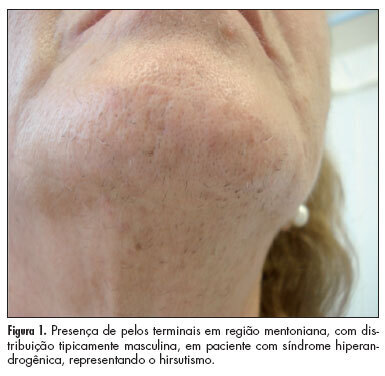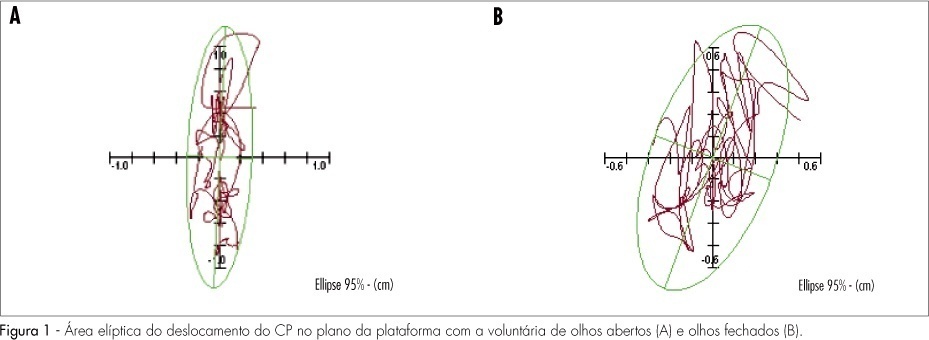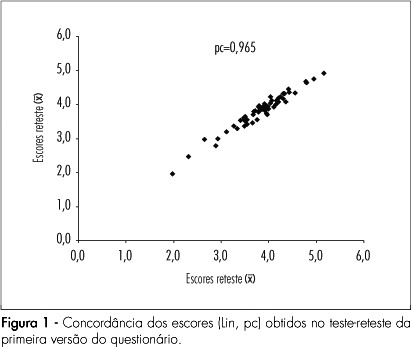Summary
Revista Brasileira de Ginecologia e Obstetrícia. 2011;33(8):214-220
DOI 10.1590/S0100-72032011000800008
ABSTRACT Hyperandrogenic syndromes include diseases that manifest through an increased biological activity of androgens and that can originate from neoplastic or functional diseases. Androgen-secreting ovarian tumors represent about 1% of ovarian neoplasias. Steroid cell tumors are among the more rare types which account for less than 0.1% of all ovarian tumors. They are usually benign, of small dimensions and unilateral. We report here a rare case of a unilateral steroid cell tumor. A 60-year-old woman was seen after four months of evolution of hirsutism, clitoris hypertrophy and elevation of serum estradiol levels. Her total testosterone and 17-OH-progesterone levels were also increased.

Summary
Revista Brasileira de Ginecologia e Obstetrícia. 2011;33(2):70-74
DOI 10.1590/S0100-72032011000200003
OBJECTIVE: to correlate complaints of stress urinary incontinence and the results of a one-hour pad test in pre- and postmenopausal women. METHODS: cross-sectional study conducted on 60 postmenopausal volunteers divided into two groups: one consisting of 34 women with involuntary loss of urine due to stress incontinence and the other consisting of 26 women without involuntary loss of urine. A control group of 15 premenopausal women with normal menstrual cycles and no urinary complaints was also used. All women underwent clinical and laboratory analysis as well as the one-hour pad test. Patients were considered to be incontinent when sanitary pad weight post-test was more than 1 g. Data were submitted to descriptive statistics, parametric ANOVA, post-hoc Tukey test and Pearson's correlation. RESULTS: all postmenopausal women presented with stress urinary incontinence during the pad test, both those with urinary loss (4 g) and with no previous loss (3.5 g). A strong correlation was observed between urinary loss and time since menopause (r=0.8; p<0.01) and body mass index (r=0.7; p=0.01). Premenopausal women were continent during the pad test (0.4 g). CONCLUSIONS: the results of the one-hour pad test showed that all postmenopausal women exhibited stress urinary incontinence, including those without urine loss on effort. Urine loss was correlated with time since menopause and body mass index.
Summary
Revista Brasileira de Ginecologia e Obstetrícia. 2010;32(7):327-333
DOI 10.1590/S0100-72032010000700004
PURPOSE: to evaluate the clinical and epidemiological risk factors for endometrial cancer in postmenopausal women with endometrial polyps, as well as the genetic polymorphism of the progesterone receptor (PROGINS). METHODS: a case-control study was designed with 160 postmenopausal women with endometrial polyps, compared to a normal Control Group of 400 postmenopausal women. The genotyping of PROGINS polymorphism was determined by the polymerase chain reaction. Clinical and epidemiological data were compared between benign endometrial polyps and 118 of the control subjects. Variables were also compared with regard to benign and malignant endometrial polyps. RESULTS: comparison of the epidemiological variables between groups showed a significant difference for age, ethnicity, time since menopause, parity, tamoxifen use, hypertension and breast cancer, all of them more prevalent in the polyp group. After adjustment for age, statistical significance remained only for parity (OR=1.1), hypertension (OR=2.2) and breast cancer (OR=14.4). There were six cases of malignant polyps (3.7%). The frequency of bleeding was 23.4% for benign polyps and 100% for malignant polyps, with large polyps being detected in 54.6% of the benign cases and in 100 of the malignnat ones. The frequency of arterial hypertension was 54.5% for benign polyps and 83.3% for the malignant ones. The frequency of PROGINS T1/T1, T1/T2 and T2/T2 polymorphism was 79.9%, 19.5% and 0.6%, respectively, for the polyp group, and 78.8%, 20.8% and 0.5% for the Control Group. CONCLUSIONS: elderly age, hypertension, and breast cancer were significantly associated with endometrial polyps. The presence of PROGINS polymorphism was not significantly associated with endometrial polyps. The incidence of malignant polyps was low and strongly associated with bleeding, large-sized polyp and arterial hypertension.
Summary
Revista Brasileira de Ginecologia e Obstetrícia. 2009;31(10):496-502
DOI 10.1590/S0100-72032009001000005
PURPOSE: to evaluate the rate of fall and its association with stabilometric parameters in postmenopause women, with or without osteoporosis. METHODS: transversal cohort study including 266 over 60-year-old women with and without osteoporosis, with at least 12 months of amenorrhea. The women were interviewed about the occurrence of falls in the previous 12 months, and about clinical and sociodemographic information. The osteoporosis diagnosis was done through bone densitometry and the postural stability evaluated through a stabilometric platform. For statistical analysis, mean, standard deviation, percentage, Mann-Whitney test, χ2 and Odds Ratio, and Spearman's correlation coefficient have been calculated. RESULTS: women with osteoporosis presented lower body mass index (BMI), lower schooling, shorter hormonal therapy and sooner menopause onset. The rate of fall was significantly higher in the group of women with osteoporosis (51.1%) (p<0.01), that presented an adjusted risk of 1.9 (1.3 to 3.4) times higher of falls and 3.2 (1.2 a 8.2) times higher of recurrent falls than the group without osteoporosis. Women with osteoporosis presented higher amplitude of Y axis oscillation in the open-eye test, than women without osteoporosis. The adjusted correlation analysis between stabilometric parameters and falls has not shown any significant correlation. CONCLUSIONS: women with post-menopausal osteoporosis present higher rate of falls and higher risk of recurrent falls, as compared with women without osteoporosis.

Summary
Revista Brasileira de Ginecologia e Obstetrícia. 2009;31(6):293-299
DOI 10.1590/S0100-72032009000600005
PURPOSE: to generate and validate a proper questionnaire to evaluate the sexual function in post-menopause women. METHODS: 251 women, within 2 to 15 years postmenopause, were included in the study. Questionnaire's reproductibility/reliability was evaluated by Pearson, intraclass and Lin's correlation coefficients. The internal consistance was examined by the Cronbach's alpha coefficient. Classical item theory guidelines were used for face, content and construct validation. RESULTS: an instrument with 57 items and nine domains was generated. Fourteen questions (24.5%) were eliminated by either poor correlation with the scale or low discriminative power. The final version with 43 items has shown good reproductibility (r=0.719, 95%CI=0.690-0.750; pc=0.887; 95%CI=0.850-0.930; p<0.001). Internal consistance was also adequate (α=0.951). About 60% of the reviewers have confirmed face and content validation. The construct validation was assessed by the Cronbach alpha 0.951. CONCLUSIONS: it was concluded that the new instrument is appropriate for evaluating the sexual function in post-menopause women.

Summary
Revista Brasileira de Ginecologia e Obstetrícia. 2008;30(8):379-383
DOI 10.1590/S0100-72032008000800002
PURPOSE: to verify the association of osteoporosis with periodontal disease. METHODS: the study has included 39 postmenopausal women divided in three groups according to bone mass categories, through evaluation of mineral bone density (MBD), measured by X-ray double emission absorbimetry in the lumbar area (L1-L4): ): normal bone; osteopenia and osteoporosis. In all the participants the Clinical Insertion Level (CIL) index has been determined at the research onset and after one year, by the same examiner. The periodontal situation data have been submitted to statistical analysis with the paired t-Student test. RESULTS: the periodontal exam has shown that postmenopausal women in the osteopenia presented lower CIL at the initial periodontal clinical exam (2.1±1.1 mm), while the ones in the normal bone showed less teeth support tissue loss after one year (3.1±1.6 mm). The statistical analysis has shown that there was no significant difference for the periodontal situation in the normal bone, but there was significant statistical difference for the osteopenia and osteoporosis patients, when CIL values from both evaluation periods were compared. CONCLUSIONS: it is concluded that postmenopausal osteoporosis may be a possible risk factor for periodontal disease.
Summary
Revista Brasileira de Ginecologia e Obstetrícia. 2008;30(4):182-189
DOI 10.1590/S0100-72032008000400005
PURPOSE: to evaluate the anthropometric measures as predictors of cardiovascular and metabolic risk in non-transmissible chronic diseases in postmenopausal women. METHODS: a clinical and sectional study enrolling 120 sedentary postmenopausal women (amenorrhea for at least 12 months, age 45 to 70 years was conducted). Exclusion criteria included insulin-dependent diabetes and use of statins or hormone therapy within the preceding six months. Anthropometric indicators included: weight, height, body mass index (BMI=weight/height²), and waist circumference (WC). Metabolic profiles as total cholesterol (TC), HDL, LDL, triglycerides (TG), glycemia, and insulin were measured and the atherogenic index of plasma (AIP) and Homeostasis model assessment-insulin resistance (HOMA-IR) were calculated. One-way analysis of variance (ANOVA) and Odds Ratio (OR) were used in the statistical analysis. RESULTS: subjects were classified on average as overweight and showed central fat distribution. Overweight and obesity were observed in 76% and abdominal obesity in 87.3% of the patients. On average, TC, LDL and TG levels were higher than recommended in 67.8, 55.9 and 45.8% of the women, respectively, and HDL was low in 40.7%. Values of WC >88 cm were observed in 14.8% of women with normal weight, 62.5% overweight and 100% obesity p>0.05). On average, the values of AIP, TG, and HOMA-IR increased significantly along with values of BMI and WC, while decreased HDL (p<0.05). Among women with WC >88 cm, a risk association was observed with low HDL (OR=5.86; 95%CI=2.31-14.82), with higher TG (OR=2.61; 95%CI=1.18-5.78), with higher AIP (OR=3.42; 95%CI=1.19-9.78) and with IR (OR=3.63; 95%CI=1.27-10.36). There was a risk of low HDL (OR=3.1; 95%CI=1.44-6.85) with increased obesity (BMI>30 kg/m²). CONCLUSIONS: in the postmenopausal women, the simple measure of WC can predict cardiovascular and metabolic risk of non-transmissible chronic diseases.